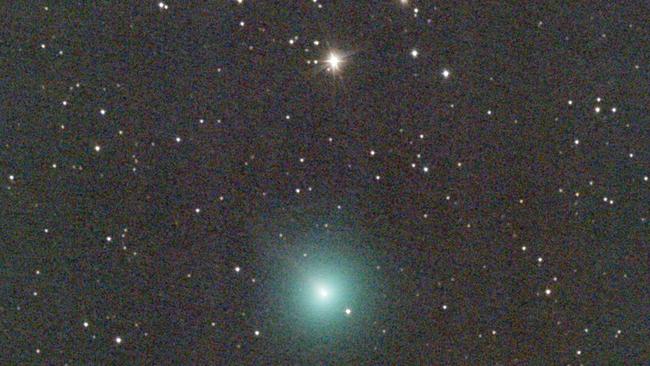Comet SWAN could soon be seen with the naked eye in Australian skies after Victorian discovery
The coronavirus lockdown has provided a Victorian pathologist with more time for his first love, astronomy. He’s used it to add a new discovery to his list of achievements – and you may soon be able to see it with the naked eye.

Leader
Don't miss out on the headlines from Leader . Followed categories will be added to My News.
A new comet discovered by a Victorian amateur astronomer is now visible in Australian skies.
Michael Mattiazzo first saw Comet SWAN (C/2020 F8) while analysing data from the Solar and Heliospheric Observatory’s SWAN instrument.
The Swan Hill pathologist checks the SWAN data most days and this latest find is his 8th comet discovery.
“Anyone can access the data but you have to know what you’re looking for to see anything meaningful,” he said.
“It takes years of experience.”
Mr Mattiazzo, 50, photographed the comet using a regular camera with a wide field telephoto lens and then tapped into his global network to find another astronomer to check his find.
Martin Masek responded from the Czech Republic and used a remote telescope in Argentina to confirm the discovery.

Mr Mattiazzo said his only disappointment was the fact that the comet had not been named in his honour.
Instead it was called Comet SWAN – after the instrument used in its discovery.
“That’s the naming convention. In order for a comet to be named after me I would have to find it using my own equipment,” Mr Mattiazzo said.
Since the coronavirus crisis began demand for pathology services had declined, he said.
“It’s been very quiet in Swan Hill, even the hospital has had a lot less people through.”
The Solar and Heliospheric Observatory was built by the European Space Agency and launched by NASA in 1995.
It was designed to study the internal structure of the sun.
The SWAN instrument was created to survey the solar system for hydrogen.
When the solar wind blows into a cloud of hydrogen-bearing compounds, the impact produces UV photons that SWAN can photograph.
Karl Battams of the Naval Research Lab in Washington DC told Space Weather that Comet SWAN must be producing a significant amount of hydrogen.
MORE NEWS
NEW USE FOR PARTY MARQUEES DURING COVID CRISIS
WANTED: 800 TRADIES FOR FRANKSTON DEVELOPMENT
MORDIALLOC MAN’S MARATHON AROUND HOUSE
Comet SWAN is currently located in southern skies, best seen by telescopes in Australia, New Zealand, southern Africa and South America.
Mr Battams said the comet could be visible to the naked eye in late May.
However he said it was possible the comet would soon fade.
“But we’ve only been viewing it for a couple of days, so no one knows,” he said.
Details about how to view Comet SWAN will be posted on Mr Mattiazzo’s Southern Comets website – http://members.westnet.com.au/mmatti/sc.htm
